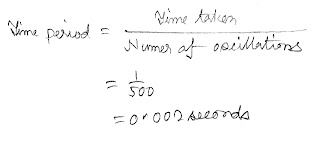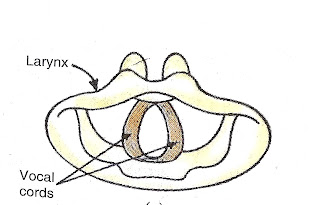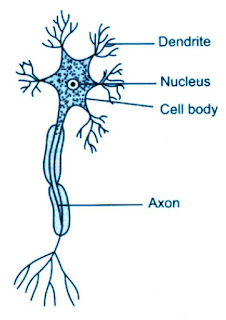Sound: NCERT Solution Class 8
In NCERT solution for class 8 of science chapter 13 Sound get questions with answers, worksheet, notes etc.
Question 1:
Choose the correct answer:
Sound can travel through
(a) gases only (b) solids only (c) liquids only (d) solids, liquids and gases.
Answer 1:
Sound can travel through (d) solids, liquids and gases.
You may Like
Question 1:
Choose the correct answer:
Sound can travel through
(a) gases only (b) solids only (c) liquids only (d) solids, liquids and gases.
Answer 1:
Sound can travel through (d) solids, liquids and gases.
You may Like
2. NCERT Solutions for Class 8 Maths Chapter-wise PDF Download
3. MCQ Questions for Class 8 Maths with Answers Download PDF Solution Chapter Wise
3. MCQ Questions for Class 8 Maths with Answers Download PDF Solution Chapter Wise
Question 2:
Which of the following voices is likely to have minimum frequency?
(a) Baby girl (b) Baby boy (c) A man (d) A woman
As
Answer 2:
(c) A man
Question 3:
In the following statements, tick T against those which are true, and F against those which are false:
(a) Sound cannot travel in vacuum. (T/F)
Answer: True.
(sound only can travel through material medium that is solid liquid and gas)
(b) The number of oscillations per second of a vibrating object is called its time period. (T/F)
Answer: false.
(The number of oscillations per second of a vibrating object is called frequency)
(c) If the amplitude of vibration is large, sound is feeble. (T/F)
Answer: false.
(If the amplitude of vibration is large, sound is louder).
(d) For human ears, the audible range is 20 Hz to 20,000 Hz. (T/F)
Answer: true.
(The sound frequency between 20 Hertz to 20000 Hertz is called audible range of sound)
(e) The lower the frequency of vibration, the higher is the pitch. (T/F)
Answer: false.
(The lower the frequency of vibration, the lower is the pitch. Because pitch is directly proportional to frequency)
(f) Unwanted or unpleasant sound is termed as music. (T/F)
Answer: false.
(Unwanted or unpleasant sound is termed as noise.)
(g) Noise pollution may cause partial hearing impairment. (T/F)
Answer: true.
Question 4:
Fill in the blanks with suitable words.
(a) Time taken by an object to complete one oscillation is called ................... .
(b) Loudness is determined by the ......................... of vibration.
(c) The unit of frequency is .......................... .
(d) Unwanted sound is called ......................... .
(e) Shrillness of a sound is determined by the ................. of vibration.
Answer 4:
(a) Time taken by an object to complete one oscillation is called time period.
(b) Loudness is determined by the amplitude of vibration.
(c) The unit of frequency is hertz (Hz).
(d) Unwanted sound is called noise.
(e) Shrillness of a sound is determined by the frequency of vibration.
Question 5:
A pendulum oscillates 40 times in 4 seconds. Find its time period and frequency.
Answer 5:
Question 6:
The sound from a mosquito is produced when it vibrates its wings at an average rate of 500 vibrations per second. What is the time period of the vibration?
Answer 6:
Question 7:
Identify the part which vibrates to produce sound in the following instruments:
(a) Dholak (b) Sitar (c) Flute
Answer 7:
(a) Dholak: In the Dholak there is a stretch membrane which produce sound due to vibrating.
(b) Sitar: sitar is a string instrument and due to vibration of string sound is produced.
(c) Flute: there is a air column present inside the flute which due to vibration produce sound.
Question 8:
What is the difference between noise and music? Can music become noise sometimes?
Answer 8:
Music is a sound which produces a pleasing sensation while noise is an unwanted and unpleasant sound. Music is produced by nature, musical instruments etc. Noise is produced by horns of vehicles, by machines etc.
Music can become noise when we play it at very high volume or too many music are being played at the same time with unpleasant loudness.
Question 9:
List sources of noise pollution in your surroundings.
Answer 9:
Cause of noise pollution are
(i) blowing horns of vehicles and sound of their engines cause noise pollution
(ii) blasting of crackers on various social and religious occasions.
(iii) the take off, landing and flying of aeroplanes profuce noise pollution
(iv) playing of loudspeakers
(v) the construction of buildings produces a lot of noise.
Question 10:
Explain in what way noise pollution is harmful to humans.
Answer 10:
(i) loud noise can cause great harm to our ears.
(ii) loud noise can cause a person to lose concentration in his work or study.
(iii) loud noise can cause irritation and headache.
(iv) loud noise during night time disturb our sleep.
Question 11:
Your parents are going to buy a house. They have been offered one on the roadside and another three lanes away from the roadside. Which house would you suggest your parents should buy? Explain your answer.
Answer 11:
Closer to roadside, larger the noise pollution. So, I would suggest a house which is three lanes away from the roadside because the pollution level (both air and noise pollution) is somewhat less there.
Question 12:
Sketch larynx and explain its function in your own words.
Answer:
The human beings produce sound by using the voice box which is called larynx. Voice box is situated in our throat at the top of the wind pipe. The human voice box contents to ligaments known as vocal cords. The vocal cords are a kind of Strings. Sound is produced by the vibration of vocal cords. the vocal cords are attached to muscles which change the tension in the chords and the distance between the chords.
Question 13:
Lightning and thunder take place in the sky at the same time and at the same distance from us. Lightning is seen earlier and thunder is heard later. Can you explain?
Answer 13:
Speed of light is much much faster than sound. Speed of sound is 330 m/s and speed of light is 300,000,000 m/s. Light travels much faster than sound that is why lightning is seen earlier and thunder is heard.
Which of the following voices is likely to have minimum frequency?
(a) Baby girl (b) Baby boy (c) A man (d) A woman
As
Answer 2:
(c) A man
Question 3:
In the following statements, tick T against those which are true, and F against those which are false:
(a) Sound cannot travel in vacuum. (T/F)
Answer: True.
(sound only can travel through material medium that is solid liquid and gas)
(b) The number of oscillations per second of a vibrating object is called its time period. (T/F)
Answer: false.
(The number of oscillations per second of a vibrating object is called frequency)
(c) If the amplitude of vibration is large, sound is feeble. (T/F)
Answer: false.
(If the amplitude of vibration is large, sound is louder).
(d) For human ears, the audible range is 20 Hz to 20,000 Hz. (T/F)
Answer: true.
(The sound frequency between 20 Hertz to 20000 Hertz is called audible range of sound)
(e) The lower the frequency of vibration, the higher is the pitch. (T/F)
Answer: false.
(The lower the frequency of vibration, the lower is the pitch. Because pitch is directly proportional to frequency)
(f) Unwanted or unpleasant sound is termed as music. (T/F)
Answer: false.
(Unwanted or unpleasant sound is termed as noise.)
(g) Noise pollution may cause partial hearing impairment. (T/F)
Answer: true.
Question 4:
Fill in the blanks with suitable words.
(a) Time taken by an object to complete one oscillation is called ................... .
(b) Loudness is determined by the ......................... of vibration.
(c) The unit of frequency is .......................... .
(d) Unwanted sound is called ......................... .
(e) Shrillness of a sound is determined by the ................. of vibration.
Answer 4:
(a) Time taken by an object to complete one oscillation is called time period.
(b) Loudness is determined by the amplitude of vibration.
(c) The unit of frequency is hertz (Hz).
(d) Unwanted sound is called noise.
(e) Shrillness of a sound is determined by the frequency of vibration.
Question 5:
A pendulum oscillates 40 times in 4 seconds. Find its time period and frequency.
Answer 5:
Question 6:
The sound from a mosquito is produced when it vibrates its wings at an average rate of 500 vibrations per second. What is the time period of the vibration?
Answer 6:
Question 7:
Identify the part which vibrates to produce sound in the following instruments:
(a) Dholak (b) Sitar (c) Flute
Answer 7:
(a) Dholak: In the Dholak there is a stretch membrane which produce sound due to vibrating.
(b) Sitar: sitar is a string instrument and due to vibration of string sound is produced.
(c) Flute: there is a air column present inside the flute which due to vibration produce sound.
Question 8:
What is the difference between noise and music? Can music become noise sometimes?
Answer 8:
Music is a sound which produces a pleasing sensation while noise is an unwanted and unpleasant sound. Music is produced by nature, musical instruments etc. Noise is produced by horns of vehicles, by machines etc.
Music can become noise when we play it at very high volume or too many music are being played at the same time with unpleasant loudness.
Question 9:
List sources of noise pollution in your surroundings.
Answer 9:
Cause of noise pollution are
(i) blowing horns of vehicles and sound of their engines cause noise pollution
(ii) blasting of crackers on various social and religious occasions.
(iii) the take off, landing and flying of aeroplanes profuce noise pollution
(iv) playing of loudspeakers
(v) the construction of buildings produces a lot of noise.
Question 10:
Explain in what way noise pollution is harmful to humans.
Answer 10:
(i) loud noise can cause great harm to our ears.
(ii) loud noise can cause a person to lose concentration in his work or study.
(iii) loud noise can cause irritation and headache.
(iv) loud noise during night time disturb our sleep.
Question 11:
Your parents are going to buy a house. They have been offered one on the roadside and another three lanes away from the roadside. Which house would you suggest your parents should buy? Explain your answer.
Answer 11:
Closer to roadside, larger the noise pollution. So, I would suggest a house which is three lanes away from the roadside because the pollution level (both air and noise pollution) is somewhat less there.
Question 12:
Sketch larynx and explain its function in your own words.
Answer:
The human beings produce sound by using the voice box which is called larynx. Voice box is situated in our throat at the top of the wind pipe. The human voice box contents to ligaments known as vocal cords. The vocal cords are a kind of Strings. Sound is produced by the vibration of vocal cords. the vocal cords are attached to muscles which change the tension in the chords and the distance between the chords.
Question 13:
Lightning and thunder take place in the sky at the same time and at the same distance from us. Lightning is seen earlier and thunder is heard later. Can you explain?
Answer 13:
Speed of light is much much faster than sound. Speed of sound is 330 m/s and speed of light is 300,000,000 m/s. Light travels much faster than sound that is why lightning is seen earlier and thunder is heard.




